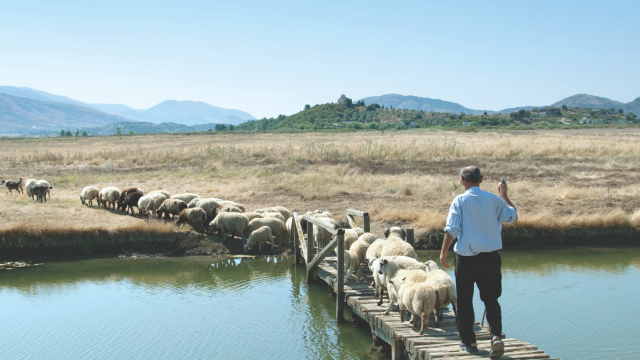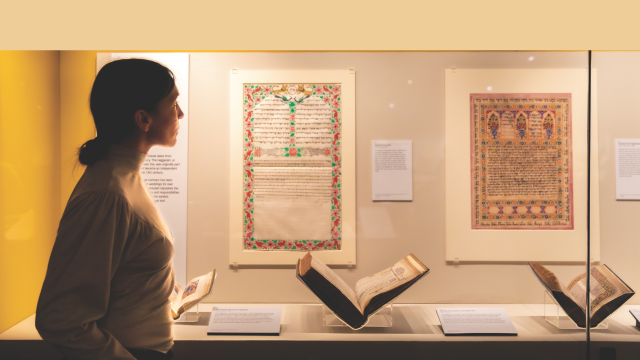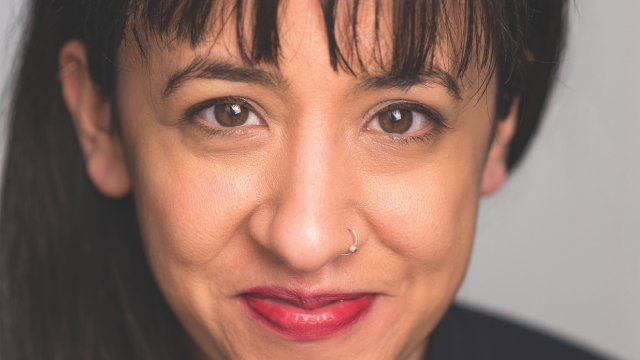-
QUALIFICATIONS
- For Linguists Worldwide
- For UK Public Services
- Preparation
- Policies & Regulation
-
MEMBERSHIP
- Join CIOL
- Membership grades
- NEW for Language Lovers
- Chartered Linguist
- Already a member?
- Professional conduct
- Business & Corporate Partners
-
ASSESSMENTS
- For Second Language Speakers
- English as a Second Language
-
EVENTS & TRAINING
- CPD, Webinars & Training
- CIOL Conference Season 2025
- Events & Networks
- CIOL Mentoring
-
NEWS & VOICES
- News & Voices
- CIOL eNews
- CIOL Awards
- The Linguist
- Jobs & Ads
-
RESOURCES
- For Translators & Interpreters
- For Universities & Students
- Standards & Norms
- CIOL & AI
- All Party Parliamentary Group
- In the UK
- UK Public Services
- Find-a-Linguist
Layers of language, layers of history
Caroline Makropoulos MCIL CL visits the Greek Royal Cemetery at Tatoi.
Nestled in the depths of the forest of the Tatoi Estate, at the foothills of Mount Parnitha on the north edge of Athens, lies the little-known Greek Royal Cemetery of the palaia anaktora (old palace), as it is known. Bought by the royal family at the end of the 19th century as a summer retreat, the grounds of this vast estate are now open to the public and continue to provide an attractive escape from the oppressive heat of the city. (The once fragrant pine and cypress forest was devastated by a massive fire in 2021 and sadly only a handful of trees escaped unscathed.)
One can find this relatively modern burial ground at the southern end of Ktima Tatoi, an oasis of silence and calm in contrast to the ancient sites that draw millions of visitors to Greece each year. Dating from 1880 to 2007, the 20 tombs are scattered around the Royal Chapel of the Resurrection – three within a mausoleum and the rest “under the sun of Greece”, as King George I of the Hellenes put it.1 As you walk among the graves, pages from the lives of the princely houses of Europe fall open at every twist and turn in the path. To read the inscriptions on the tombs is to trace the criss-crossing currents of lineages and languages throughout the 19th and 20th centuries.

The sheer diversity of the languages and scripts on the gravestones is striking: Greek, French, English, Russian, Danish and German. This colourful linguistic tapestry is enriched by three varieties of Greek: Demotic (Modern Greek), Koine (New Testament Greek) and Katharevousa (an archaising form of Modern Greek).
While the Greek language has a long and venerable history, the Greek monarchy was a comparatively recent phenomenon that sprung into being two years after the recognition of the modern Greek state in 1830 and lasted until a referendum in 1973. Following the hasty departure of the first King Otto of Greece (a Prince and native of Bavaria) in 1862, a 17-year-old Danish Prince (Wilhelm of Schleswig-Holstein-Sonderburg-Glücksburg no less) was elected George I, King of the Hellenes. It was this king who bought Tatoi in 1872.2
The Danish heritage of the cemetery’s founder aside, the greatest source of historical and linguistic interest is the graves of the women – the daughters and brides of the House of Glücksburg – six of which are particularly remarkable. Having duly decided to learn Greek, as a further nod to the culture of his subjects, King George I settled on the Christian Orthodox Grand Duchess Olga Constantinovna of Russia as a suitable consort. She was born in the Pavlovsk Palace into the House of Romanov, and alongside the Greek on her tombstone, these words in pre-Revolutionary Russian are testament to her origins:
Россiйскаго императорскаго дома великая княжна
Grand Duchess of the Russian Imperial House
Alexandra, Princess of Greece and Denmark, was their third child and eldest daughter, and thus of mixed Danish and Russian heritage, as well being one of the first scions to be born in Greece.3 Her gravestone reads:
ΑΛΕΞΑΝΔΡΑ
ΒΑΣΙΛΟΠΑΙΣ ΤΗΣ ΕΛΛΑΔΟΣ
ΜΕΓΑΛΗ ΔΟΥΚΙΣΣΑ ΤΗΣ ΡΩΣΣΙΑΣ
PRINSESSE TIL DANMARK
ΓΕΝ. 18 ΑΥΓΟΥΣΤΟΥ 1870
ΕΝ ΚΕΡΚΥΡΑ
ΑΠ. 12 ΣΕΠΤΕΜΒΡ. 1891
ΕΝ ΙΛΙΣΚΟΕ (ΜΟΣΧΑ)
Ο ΠΙΣΤΕΥΩΝ ΕΙΣ ΕΜΕ
ΚΑΝ ΑΠΟΘΑΝΗ ΖΗΣΕΤΑΙ
ALEXANDRA
PRINCESS OF GREECE
GRAND DUCHESS OF RUSSIA
PRINCESS OF DENMARK
B. 18 AUGUST 1870
IN CORFU
D. 12 SEPTEMBER 1891
IN ILISKOE [sic] (MOSCOW)4
HE THAT BELIEVETH IN ME, THOUGH HE WERE DEAD, YET SHALL HE LIVE
Alongside Modern Greek (Μεγάλη Δούκισσα της Ρωσίας), we find Katharevousa (βασιλόπαις της Ελλάδος; lit. ‘king-child of Greece’5), Koine (ό πιστευων εις εμε καν αποθανη ζησεται) and Danish (Prinsesse til Danmark; lit. ‘Princess to Denmark’). The preposition ‘to’ is only used in this context for members of the Danish royal family in line of succession.
Alexandra’s eldest brother, Crown Prince Constantine, chose a granddaughter of Queen Victoria for his wife. Princess Sophia of Prussia was the daughter of Victoria, Princess Royal, and the German Emperor Frederick III, and therefore both a descendant of the House of Hanover and a member of the House of Hohenzollern. Born in the Neues Palais in Potsdam, Prussia, and raised a Protestant, Sophia married Constantine in 1889, later converting to Greek Orthodoxy. The words on her gravestone are a mixture of Modern Greek and Koine, as well as Katharevousa, German and Danish:
ΣΟΦΙΑ
ΒΑΣΙΛΙΣΣΑ ΤΩΝ ΕΛΛΗΝΩΝ
PRINSESSE TIL DANMARK
PRINZESSIN VON PREUSSEN
ΓΕΝ: ΕΝ ΠΟΤΣΔΑΜ 14 ΙΟΥΝ. 1870
ΑΠ. ΕΝ ΦΡΑΝΓΦΟΥΡΤΗ 13 ΙΑΝ 1932
ΑΙ ΠΡΟΣΕΥΧΑΙ ΣΟΥ ΚΑΙ ΑΙ ΕΛΕΥΜΟΣΥΝΑΙ
ΣΟΥ ΑΝΕΒΗΣΑΝ ΕΙΣ ΜΝΗΜΟΣΥΝΟΝ
ΕΜΠΡΟΣΘΕΝ ΤΟΥ ΘΕΟΥ
SOPHIA
QUEEN OF THE HELLENES (Modern Greek)
PRINCESS OF DENMARK (Danish)
PRINCESS OF PRUSSIA (German)
B[orn] IN POTSDAM 14 JUNE 1870
D[ied] IN FRANKFURT 13 JANUARY 1932
THY PRAYERS AND THINE ALMS ARE COME UP FOR A MEMORIAL BEFORE GOD (Koine)
The German title Prinzessin reflects her status at birth as daughter of a reigning monarch, while the Kkatharevousa words εν and απέθανεν are used instead of the Modern Greek στην and πέθανε.6 Surprisingly, despite her maternal English heritage, Queen Sophia’s gravestone contains no English; the languages of her father and husband are what defines her identity.
English does, however, feature on the tombstone of her youngest daughter, Princess Katherine of Greece and Denmark. Named Aikaterini in Greek, she was known as Lady Katherine Brandram after marrying a British Army officer and lived in Belgravia and Marlow in the UK. At her death in 2007 she was the last remaining great-granddaughter of Queen Victoria, yet hers is the most recent tombstone to be found at Tatoi.
Two of the sons of King George I and Queen Olga married French princesses. Prince Christopher, the youngest son, chose as his wife Françoise d’Orléans, a descendant of the ‘Citizen-King’ of France, Louis-Philippe. Her gravestone reads:
ΦΡΑΓΚΙΣΚΗ, ΠΡΙΓΚΗΠΙΣΣΑ ΤΗΣ ΕΛΛΑΔΟΣ
PRINCESSE TIL DANMARK
PRINCESSE DE FRANCE
Frangiski, Princess of Hellas
Princess of Denmark
Princess of France
Marie Bonaparte,7 great-grandniece of Emperor Napoleon I of France, became Princess George of Greece and Denmark upon her marriage. She is interred alongside her husband with an inscription in French, Greek and Danish. Instead of a biblical excerpt, one stumbles across lines from a poem by the Parnassian poet Leconte de Lisle:
MARIE, ΠΡΙΓΚΗΠΙΣΣΑ ΓΕΩΡΓΙΟΥ ΤΗΣ ΕΛΛΑΔΟΣ
PRINCESSE BONAPARTE
PRINSESSE TIL DANMARK
Et toi, divine mort, où tout rentre et s’efface,
Accueille tes enfants dans ton sein étoilé ;
Affranchis-nous du temps, du nombre et de l’espace,
Et rends-nous le repos que la vie a troublé.
MARIE, PRINCESS GEORGE OF GREECE
PRINCESS BONAPARTE
PRINCESS OF DENMARK
Tatoi was originally an intimate family cemetery on what was once a privately-owned estate, and the multilingual and multi-scriptal epitaphs were not designed for public display.8 The inscriptions are a reflection of the status and intertwining lineages of those buried there, and they hint at the unique stories and histories of their lives. Yet there is one unifying thread: Greek. What stands out in particular is the Greek word for king (βᾰσῐλεύς in Ancient Greek) and its derivatives: βασίλισσα (‘queen’, unchanged from Ancient Greek), βασιλεύς (‘king’, Katharevousa), βασιλόπαις (‘prince’/‘princess’, Katharevousa; lit. ‘king-child’) and βασιλοπούλα (‘princess’, literary Modern Greek from the language of fairy tales).
This is, indeed, a unique resting place for the descendants of the Grand Duchy of Russia and the Royal houses of Denmark, England, Hanover, Prussia, Orleans and Greece. To wend one's way through the cool glades at Tatoi is to take a journey back in time through layers of history and layers of language.
Caroline Makropoulos is a Greek-English translator who specialises in Christian Orthodox thought and culture. She read Modern Greek and Russian at the Queen's College, Oxford and lives in Athens, where she works at the British Embassy.
Notes
1 In response to a proposal by Anastasios Metaxas to build a crypt under the chapel.
2 He was also given the Mon Repos villa on Corfu – the birthplace of Prince Philip, Duke of Edinburgh.
3 Originally buried in the Peter and Paul Fortress in St Petersburg, the remains of Princess Alexandra were transferred to Greece in 1939. A marble tombstone still lies over her empty grave in Russia.
4 Ilyinskoye was the Romanovs' estate near Moscow.
5 Hamlet, Prince of Denmark, was rendered in the Katharevousa translation of 1858 by Ioannis Pervanoglou: Αμλέτος, Βασιλόπαις της Δανίας. The word vasiliopais (‘prince’, ‘princess’) denotes the child of a king; πριγκίπισσα (Latin roots) can also be used for the wife of a prince.
6 According to Peter Mackridge (Language and National Identity in Greece, 1766-1976; OUP 2009), “In a speech he gave at the inaugural meeting of the [Greek Language] Society in January 1905, [the poet Kostis] Palamas made a striking comparison between the demotic and katharevousa versions of the phrase ‘my father died’: while the demotic version (Πέθανε ο πατέρας μου) takes root in one’s heart, in one’s very being, he argued, the katharevousa version (Ἀπέθανεν ὁ ἐμὸς πατήρ) is like a piece of clothing that can be discarded. The demotic version ‘has grown organically as the green branch of our natural linguistic tree’, while the katharevousa version is ‘the dead branch… which has been nailed to the linguistic trunk by willpower alone’.”
7 Marie Bonaparte was a psychoanalyst and author who counted Sigmund Freud as a friend and used her wealth and connections to help him escape Nazi Germany.
8 Contrast the multilingual epitaphs (in Castilian, Latin, Arabic and Hebrew) on the grave of Fernando II of Castile-Leόn in Seville Cathedral, which were designed for a very public audience.
Filter by category
More
The Chartered Institute of Linguists (CIOL), Incorporated by Royal Charter, Registered in England and Wales Number RC 000808 and the IoL Educational Trust (IoLET), trading as CIOL Qualifications, Company limited by Guarantee, Registered in England and Wales Number 04297497 and Registered Charity Number 1090263. CIOL is a not-for-profit organisation.








